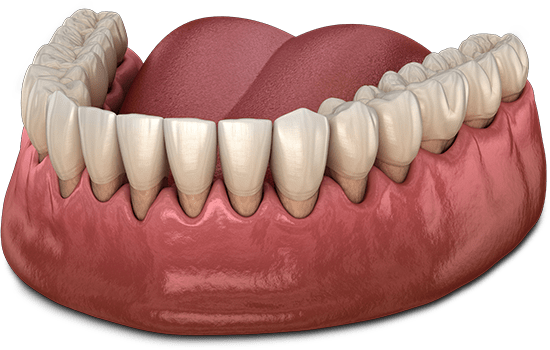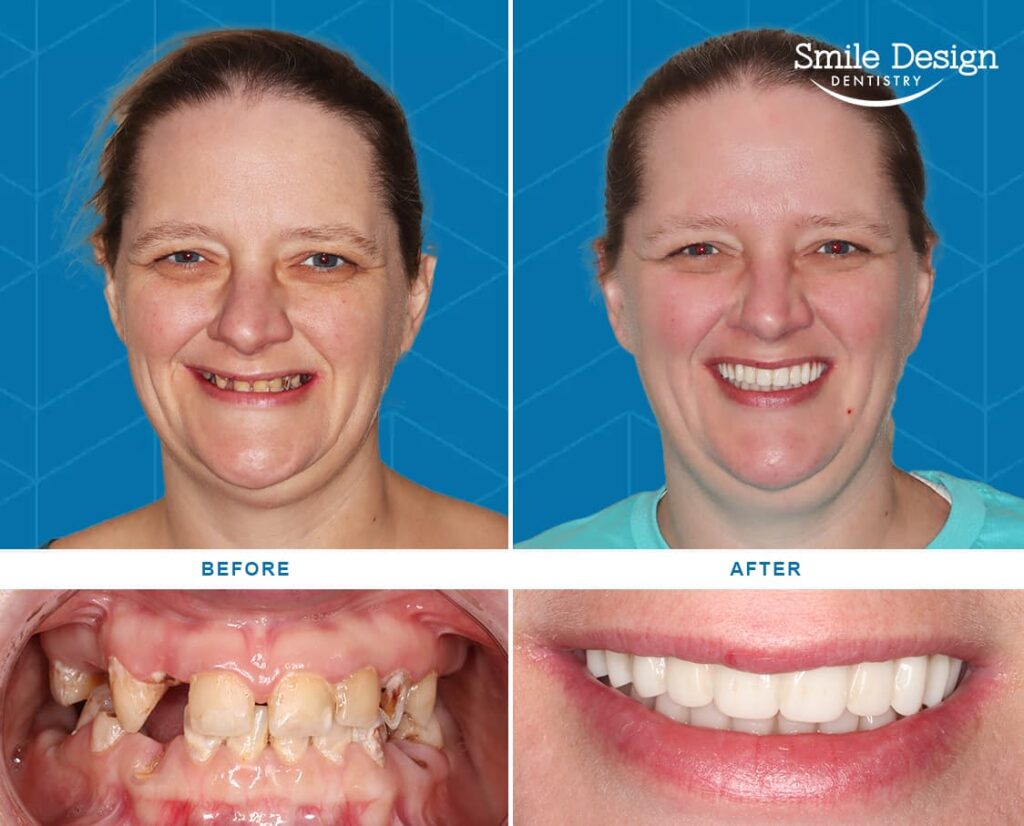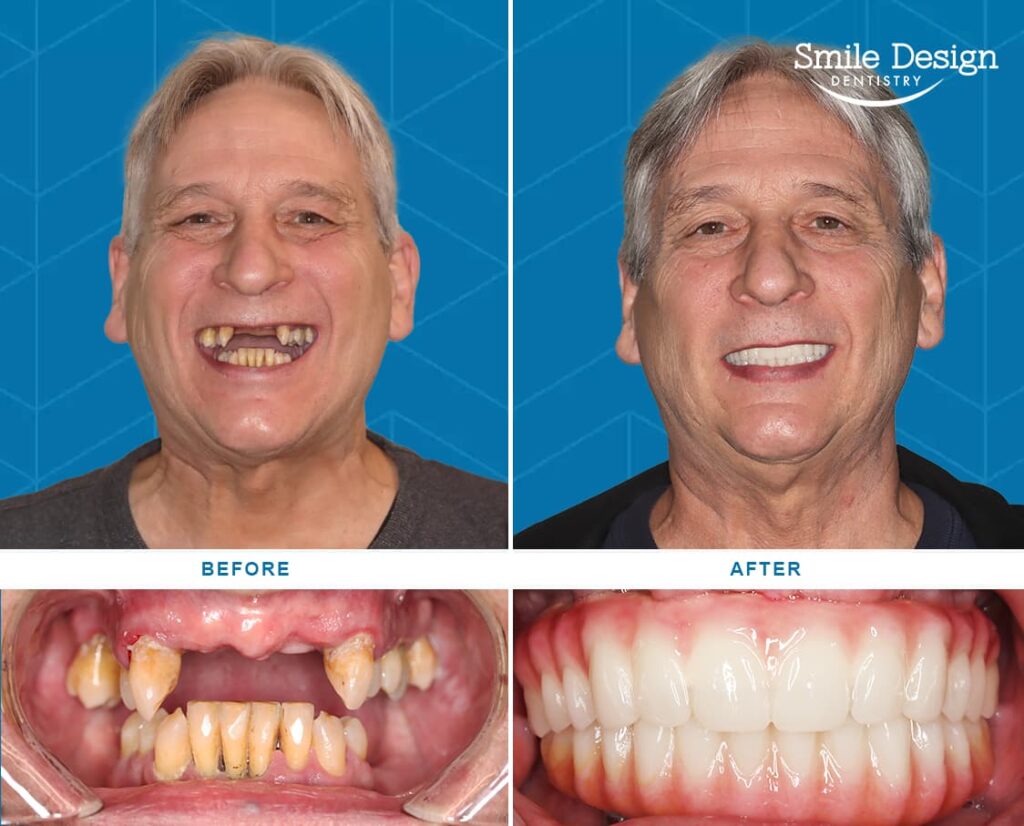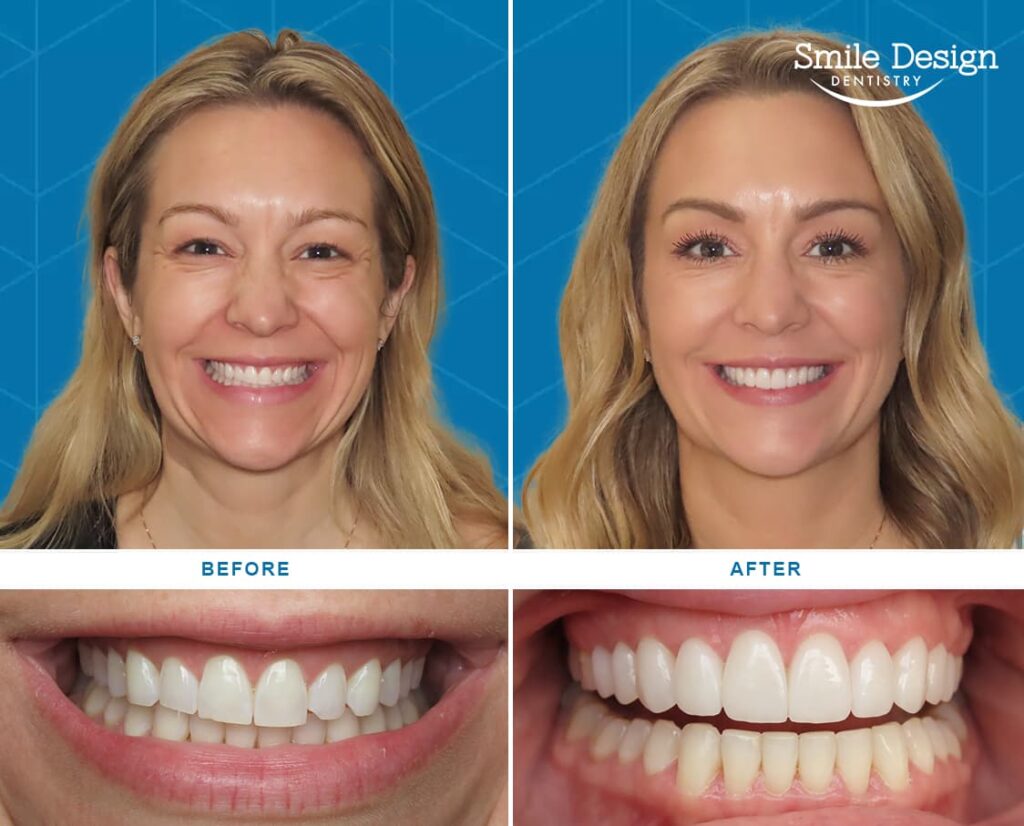PERIODONTAL TREATMENT
Plymouth, MN
Take the first step towards a healthier smile with our comprehensive periodontal treatments at Smile Design Dentistry in Plymouth, MN.
Table of Contents
Periodontics For Common Gum Problems
At Smile Design Dentistry in Plymouth, MN, we recognize your gums’ crucial role in enhancing your smile’s aesthetic and overall dental health. Healthy gums are essential as they help stabilize your teeth and protect against harmful bacteria. If you’re experiencing issues such as sore or bleeding gums, a “gummy” smile, or tongue-tie, our skilled dental team is here to help.
We utilize advanced technology and sophisticated surgical techniques, and we are dedicated to restoring the health of your gums and improving your oral function.
A healthy, confident smile can significantly enhance your quality of life. We encourage you to take the first step towards better oral health. Schedule your free consultation at Smile Design Dentistry. Your smile’s health is our top priority.
Types of Periodontal Diseases
At Smile Design Dentistry in Plymouth, MN, we specialize in diagnosing and treating all forms of periodontal disease. Here’s a breakdown of the types we commonly address:
Gingivitis is the earliest stage of periodontal disease, typically marked by red, swollen gums that may bleed during brushing. It is often the result of inadequate oral hygiene but is reversible with professional treatment and consistent home care.
Chronic Periodontitis is the most common form of periodontal disease, primarily affecting adults, but can occur at any age. It progresses slowly and is characterized by inflammation of the supporting tissues of the teeth. If not treated promptly, chronic periodontitis leads to the gradual loss of bone and eventual tooth mobility or loss.
Aggressive Periodontitis: This form occurs in patients who are otherwise clinically healthy but experience rapid attachment loss and bone destruction. It may be familial and requires immediate intervention to prevent significant oral and systemic health complications.
Necrotizing Periodontal Disease: This is an acute infection characterized by the necrosis (death) of gum tissues, periodontal ligaments, and alveolar bone. Factors such as severe malnutrition, HIV infection, and smoking are commonly associated with this form of periodontitis.
Periodontitis as a Manifestation of Systemic Diseases: Certain systemic conditions, such as heart disease, respiratory disease, and diabetes, are linked to periodontitis. It often occurs at a young age and can progress rapidly, making the management of the underlying systemic disease crucial alongside periodontal treatment.
At Smile Design Dentistry, we have the expertise and tools to manage and treat all stages of periodontal disease effectively. We emphasize the importance of regular visits and early detection, which are key to preventing disease progression and maintaining oral health. Schedule your appointment today to ensure your gums are healthy and your smile stays bright.
Diagnosis of Periodontal Diseases
Diagnosing periodontal diseases accurately is crucial for effective treatment and long-term oral health. Here’s how we diagnose periodontal diseases:
- Dental Exams: A thorough dental examination is the first step in the diagnostic process. Our dental professionals visually inspect your gums for any signs of inflammation, bleeding, or gum recession. We also check for tooth mobility and the alignment of your teeth, as these can indicate underlying periodontal issues.
- X-rays: Dental X-rays play a critical role in diagnosing periodontal disease. They allow us to see beneath the gum line and identify bone loss around the teeth. This imaging is essential for assessing the severity of the disease and planning effective treatments.
- Periodontal Probing: This is a routine procedure in which a small dental instrument called a probe measures the depth of the pockets surrounding your teeth. Shallow pockets indicate healthy gums, while deeper pockets can indicate periodontitis. Accurate probing helps assess the progression of the disease.
- Bacterial and Genetic Tests: These tests help us understand the specific bacteria causing the infection or determine if genetic factors contribute to the severity of the periodontal disease. Identifying the types of bacteria can guide in selecting the most effective treatment, including targeted antibiotics if necessary.
- Genetic Tests: In some cases, genetic tests may be recommended to identify individuals at higher risk of developing periodontal diseases due to genetic predisposition. This information is valuable for preventive strategies and early interventions.
Targeted Periodontal Treatment
Non-Surgical Treatments
On our path to restoring your oral health, Smile Design offers a range of non-surgical treatments for periodontal disease. These treatments are designed to control infection and promote gum healing without surgery.
Dental Cleaning
Regular dental cleanings prevent periodontal disease by removing plaque and tartar that can build up on teeth. These cleanings also help catch and address gingivitis before it progresses to more severe periodontitis. We recommend professional cleanings at least twice a year, though more frequent cleanings may be necessary for patients with a history of periodontal issues.
Periodontal Maintenance
Periodontal maintenance after gum disease treatment helps prevent re-infection and promote the long-term health of your gums, bones, and teeth. These deep cleanings every 3-5 months involve removing plaque and calculus accumulation from the teeth at and below the gumline. Visits also include an evaluation of gum health, including signs of inflammation or bleeding.
Scaling and Root Planing
Scaling and root planing is a deep-cleaning procedure that removes tartar and plaque from below the gum line and smooths the root surfaces where disease-causing bacteria tend to accumulate. This treatment helps reduce the depth of the periodontal pockets and facilitates healthier reattachment of the gums to the tooth surfaces. It is often recommended when gums have begun to pull away from the teeth or the roots have tartar on them.
Antibiotics & other Medications
At Smile Design Dentistry in Plymouth, MN, we incorporate antibiotic treatments alongside other periodontal therapies to effectively manage the bacteria associated with periodontal disease. Depending on the severity and scope of the infection, we customize our approach for optimal results:
- Systemic Antibiotics are often prescribed to manage infections that have spread or are severe. These antibiotics circulate through the body and can help eliminate the bacteria causing periodontal disease.
- Local Antimicrobial Products are applied directly into the periodontal pockets. This targeted approach places the antimicrobial right where it’s most needed, helping to reduce bacteria in specific areas without affecting the rest of the body.
- Enzyme Suppressants can also be used as part of the treatment plan. These agents work by inhibiting the enzymes that break down gum tissue, protecting the gums from further damage.
- Pain Relievers may be recommended to manage any discomfort associated with treatment. These can make the process more comfortable, allowing for better tolerance of dental procedures.
These treatments can be used individually or in combination to tailor a treatment plan that best suits your needs and promotes healing. At our clinic, we strive to provide the most effective and comfortable treatment options to ensure the health and longevity of your smile.
Trays with Medication
Custom-fit trays filled with medication can be an effective method for managing periodontal disease. These trays allow us to apply medication directly to the gums, which helps maintain and enhance the results of scaling and root planing. Using these trays helps control the growth of harmful bacteria and can be a convenient option for ongoing periodontal maintenance at home.
Benefiting from Better Gum Health
- Our periodontal treatments offer multiple benefits that enhance both oral and overall health:
- Improved Gum Health: Healthier gums support stronger teeth and reduce infection risks.
- Preservation of Oral Structures: Treatment prevents the progression of gum disease, protecting against tooth and bone loss.
- Enhanced Soft Tissue Aesthetics: Our treatments improve the health of your gums and enhance their appearance, contributing to a more attractive smile.
- Overall Health Benefits: Maintaining gum health helps lower the risk of systemic issues such as cardiovascular disease and diabetes.

Surgical Treatments
At Smile Design Dentistry in Plymouth, MN, we offer a variety of surgical treatments to address more advanced stages of periodontal disease and related dental issues. Our surgical options are designed with your comfort and health in mind, ensuring the best possible outcomes for your smile.
Gingivectomy
A gingivectomy is recommended when gum disease has advanced to the point where the gums have significantly receded from the teeth, forming deep pockets that no longer respond to non-surgical treatments like deep cleaning. This procedure involves reshaping or removing the diseased gum tissue to reduce pocket depth and prevent further damage to your gums, teeth, and bone structure.
Laser Gum Surgery
For a more comfortable alternative to traditional surgical methods, we employ a diode dental laser to perform gingivectomies. This laser technique eliminates the need for cutting and sewing, using targeted laser energy to vaporize diseased gum tissue gently. The laser also helps form a fibrin clot in the treated area, promoting quicker and healthier healing.
Osseous Surgery
In advanced periodontitis, where the condition poses a significant threat to oral health, osseous surgery may be necessary. This surgical approach involves making small incisions in the gums to access and remove plaque and calculus from below the gum line. After thoroughly cleaning and sanitizing the area, the gums are sutured to minimize pocket depth and allow for healing.
Crown Lengthening
If excess gum tissue gives you a “gummy” smile, crown lengthening can help. This procedure removes the excess gum tissue and reshapes the remaining gums to frame your teeth more symmetrically. Sometimes, we modify the underlying bone to enhance the tooth-to-gum ratio, creating a more aesthetically pleasing and balanced smile.
Peri-Implantitis Treatment
Peri-implantitis, an infection around a dental implant, can lead to significant tissue and bone loss if not addressed. This condition is treated similarly to gum disease, involving the surgical removal of bacterial plaque and calculus around the implant. More severe cases might require bone grafting to stabilize the implant and reduce pocket depth.
Frenectomy
Abnormalities in the frenulum—the muscular tissue connecting the upper lip and tongue to the mouth—can lead to issues such as chewing, swallowing, and speaking difficulties or dental alignment problems. A frenectomy is a surgical procedure that modifies or removes the frenulum to resolve tongue-tie or lip-tie, improving functionality and comfort.
Home Care and Maintenance
To ensure the best outcomes and prevent the recurrence of periodontal disease, we recommend the following practices:
- Regular Brushing and Flossing: Consistent and proper brushing twice daily and daily flossing are the foundations of good oral hygiene. This routine helps remove plaque, the primary cause of gum disease, and prevents it from hardening into tartar.
- Antimicrobial Mouthwash: An antimicrobial mouthwash can enhance your daily oral hygiene routine. It helps reduce bacteria that cause gum disease and reaches areas that brushing and flossing might miss.
- Special Toothbrushes or Water Flossers: For those with sensitive gums or deep pockets from periodontal disease, electric toothbrushes or water flossers can be more effective. These tools are designed to clean more gently and thoroughly than standard toothbrushes and traditional floss.
At Smile Design Dentistry, we are committed to guiding you through the best practices for home care and maintenance, ensuring your continued oral health. Contact us for more personalized recommendations and to learn how to make the most of your home care routine.
Insurance and Cost Considerations
We accept many dental insurance plans and work diligently to maximize your benefits. Our team is always available to help you understand the specifics of your coverage and how it applies to our services. It’s important to note that while we strive to provide accurate estimates, the ultimate responsibility for payment lies with the patient.
Insurance Coverage Issues
Navigating insurance coverage can be challenging, especially with the complexities in different plans and benefits. We recommend contacting your insurance provider before your appointment to confirm coverage for specific treatments. Our staff is here to assist with insurance claims and paperwork to ensure you receive the benefits you are entitled to.
Payment Plans and Financial Assistance
To make dental care more accessible, we offer various payment plans and financing options for qualifying patients. We understand that dental treatments can be a significant financial commitment, and we aim to help alleviate some of that burden. Additionally, for those without insurance, we provide a range of flexible payment options to accommodate different financial situations.
Periodontal Treatment | Plymouth, MN
At Smile Design Dentistry in Plymouth, MN, we are committed to providing comprehensive periodontal care tailored to your unique needs. Our team of experts uses the latest technologies and techniques to ensure the best outcomes for oral health. We believe in the importance of informed choices, empathetic care, and supportive financial options to make your dental care journey as smooth as possible. Contact us today to schedule your consultation and take the first step towards a healthier, more confident smile.
Before & After Photos




